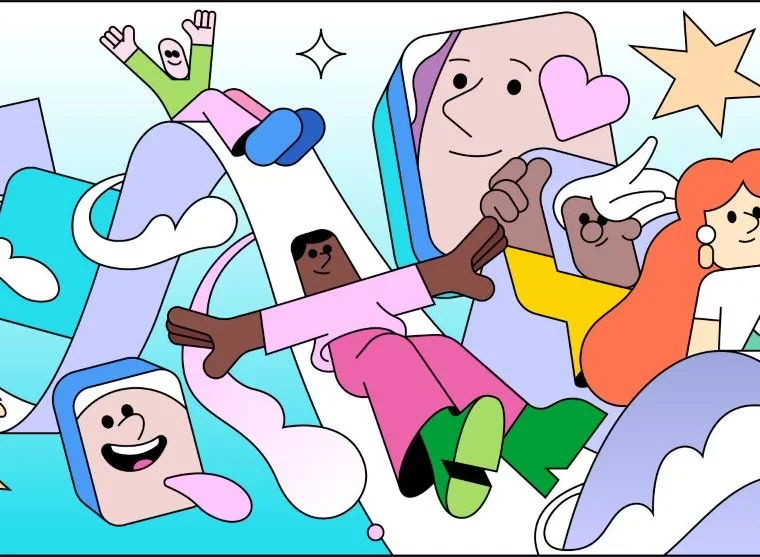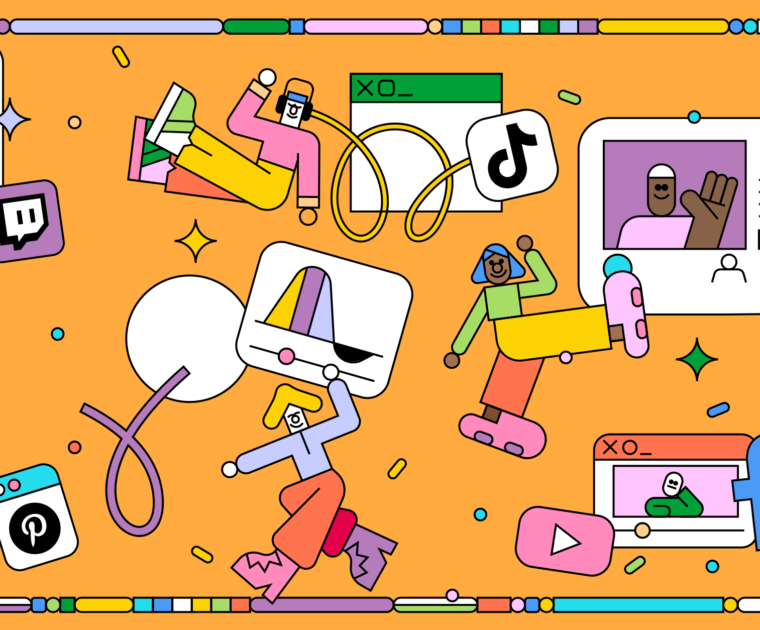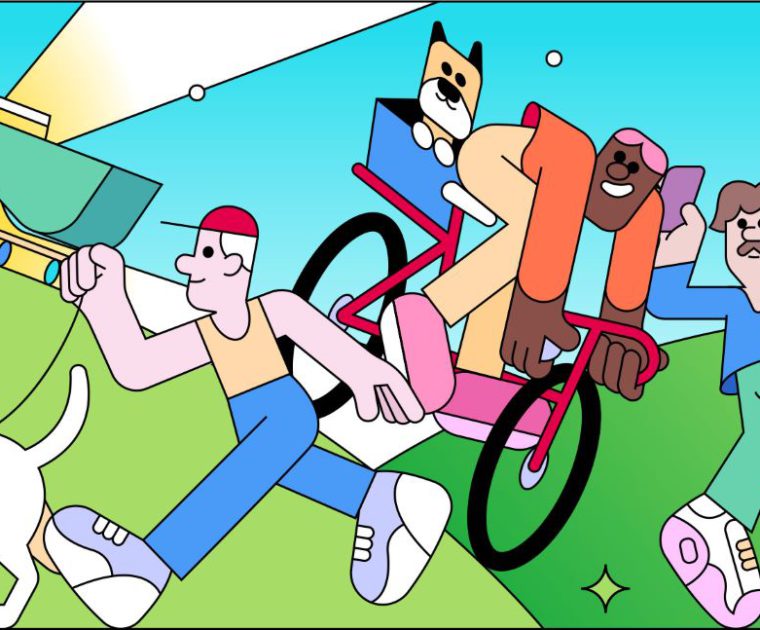The landscape of luxury brand marketing is changing. Noticeably, luxury brands are moving away from thriving on exclusivity to include products that appeal to a wider range of customers from varying socio-economic backgrounds. Still, they haven’t lost their allure. In fact, some of the world’s most sought-after manufacturers and retailers of luxury goods are capitalizing on digital marketing trends that have essentially reshaped how these high-end brands show up in the market.
I’m not saying these iconic brands are failing in this new climate, it’s actually quite the contrary. Louis Vuitton, Tiffany & Co., Chanel and Hermes all experienced over 30 percent sales growth last year; fan favorite Gucci grew by a whopping 62 percent.
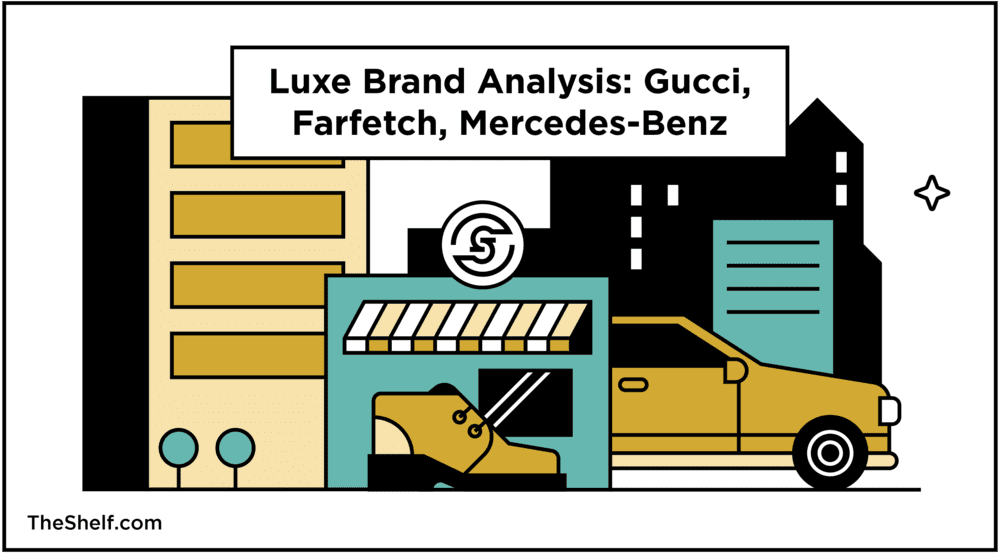
How Millennials and Gen Z Are Contributing to the Reshaping of Some of the World’s Most Iconic Luxury Brands…
Everyone is chasing Millennials. Seems to be the thing for retailers to do. Lately, we’ve been sort of looking at the numbers and analyzing what makes Millennials spend money vs what makes Boomers spend vs Gen Xers vs Gen Zers.
For years, luxury has been about exclusivity, sometimes to the detriment of the everyday shopper. Luxe brands have historically charged premium prices for premium products. But, the economic landscape is always changing, and right now, retail as a whole is suffering.
Millennials wield a significant amount of spending power at $65 billion and influencing upward of $1.3 trillion. Gen Zers influence upward of $143 billion in spending power (though some reports put that influence as high as $600 billion). Certainly, luxury brands are starting to pay attention to this significant chunk of the consumer market.
Combined, Millennials and Gen Z teens and young adults will represent around 40 percent of the luxury goods market by 2025 – up from 30 percent in 2016. Makes sense. That demographic will age-up: the oldest Millennials will be in their mid-40s and at their peak earning potential while the oldest Gen Zers will be knocking on 30.
…. Like Gucci
Gucci has topped the list of best-performing luxury brands, and they did it thanks to the star power of those pesky Millennials. We may be “killing” everything from Christmas to KFC, but in reality, we’ve got money, style, and a long list of demands from the businesses we buy from. Gucci knows that and has spent a lot of time and effort keying into what makes Millennials tick. Millennials aren’t into buying “stuff” in the way that other generations have been. They prefer experiences, and even better if they are “Gram-worthy” experiences.
Since Millennials spend most of their time engaging with brands in the digital space, they’ve put a lot of their focus on this area in the last few years. It paid for them as well, as they received L2’s Digital IQ Index top spot in both 2016 and 2017.
So, how have they cracked this corner of the market? Well, it’s been quite a multi-layered approach built up of shadow committees, social media, and design risks. Every level of their marketing has complimented another, and they have really honed in on their target market, niching-down to get the best customer base they can.
SOCIAL MEDIA MARKETING
Gucci knows how effective social media marketing can be for a luxury brand to enable them to get closer to their customers. And, they know how to do it well. They’ve got their fingers in all the social media pies, and people are happily lapping up what they’re sharing.
Building up such high follower counts across all those platforms is no easy feat, but Gucci has accomplished this by being very platform specific with their content while keeping a similar theme running across them all. By doing this, they manage to keep their brand identity strong enough that whatever content they post, it is instantly recognizable as Gucci content.
Where they really shine though, is on Millennial’s favorite site – Instagram. Their expert use of branded hashtags allowed them to coordinate some fantastic UGC campaigns. The first of these campaigns was their #GucciGram run. With this hashtag, the luxury fashion brand asked creative individuals (with a solid following on social media, of course) to share their own interpretations of the iconic patterns and motifs that Gucci uses in their designs.
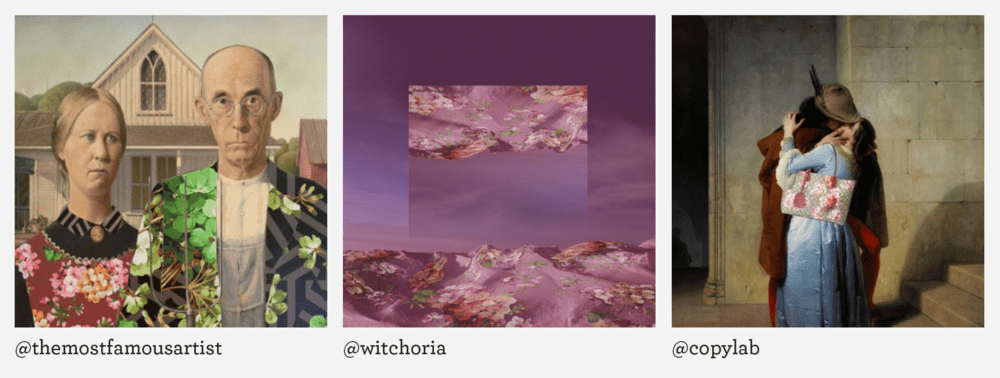
This project was inspired by the label’s newest designer Alessandro Michele who wanted to combine the old and the new to create something exciting. With this campaign, Gucci was able to tap into something that Millennials really love – novel ideas smartly done.
Their other wildly successful social media effort was their #TFWGucci hashtag (That Feeling When Gucci). With this one, they encouraged their followers to create their own memes using Gucci products and witty text. This seemed like a very bold move for such a high-end brand to make. Memes are very much the domain of the everyday internet user, not those who would normally spend their money on luxury items.
But, that’s exactly why it worked for them. They made it easier for the social media masses to relate to their brand by communicating in a way that they are used to and understand. They gave themselves a more relatable brand persona that was able to tap into the growing spending power of a new generation.

In fact, this campaign was so successful it generated a whopping 1.9 million likes and nearly 22k comments. That’s some serious engagement for the brand from their newest target market.
Clearly, targeting younger consumers is a great strategy for luxury brands as Gucci has been topping the leaderboards in most events including sales growth, fashion week engagement, and social media followers.
HOW YOU CAN USE GUCCI’S STRATEGY
Having a clear image in your mind of who your target market is is essential to every marketing campaign. But, being the first in your niche to target a new market can be a daunting thought. Don’t be afraid to go against the traditional when picking your target market, risks can pay off. You still need to be smart about it though. Gucci switched things up by going after a market they know has spending power, and has the ability to keep their brand sales healthy in these difficult times.
Know where your target market is spending time, both online and offline and center your efforts around that data. Gucci poured a lot of their social media efforts into Millennial favorite Instagram, as well as spending more time on Snapchat, and posting live content on Instagram Stories. It may be that your audience will respond better to email marketing, or even direct mail. Wherever they are, that’s where you should be.
Be aware that times are constantly changing, especially when it comes to marketing. Even Baby Boomers are spending time online and on social media now (on average, they actually spend more time on social media than Millennials), so putting your heart and soul into digital is a no-brainer whatever your goals.
…. And Farfetch
While social media may be a powerhouse when it comes to marketing to Millennials, when it comes to luxury goods, the in-store experience is still paramount to selling success. That feeling when you walk into a high-end store, you’re treated like the valued customer you are (or could be), and it becomes about more than just buying a product, it’s an experience. And there’s nothing that Millenials love more than an experience.
Often luxury stores like these can be quite intimidating to just stroll into off the street. Farfetch found a way to work around this, and start bringing in more customers, not just from outside the store itself, but from online to in-store – a very difficult feat to achieve.
First, let’s take a look at what Farfetch does. This UK-based online shopping destination is a monobrand retail model which houses multiple luxury brands on a single site, making it much easier for consumers to find the perfect piece. It does this so well in fact, that it is now the world’s most successful luxury e-commerce destination in terms of web traffic, beating out big names like Net-a-porter and Neiman Marcus.
In a dismal retail landscape, Farfetch has become something of a “unicorn” when it comes to continued success. And, to build on this success, they have begun trialling a new innovative in-store experience – their “store of the future”.
IN-STORE EXPERIENCE
The technology that Farfetch are developing is not intended to be used as a physical store for their own brand, but rather to act as a kind of operating system for other luxury brands to create their own advanced in-store experiences on top of. Until now, a lot of in-store technology has been based around gimmicky add-ons like fitting room photo booths that are nothing more than PR stunts that tend to fizzle out in no time.

What Farfetch have been working on though, is much more exciting. From clothes racks that automatically track what your viewing and add items to your wishlist, to a login system that recognises you as you walk into the store, they’ve made a concept that makes the in-store experience more personalised than ever, while tying it seamlessly into the digital space.
So, why is this set to be so popular? Let’s think about why people like shopping online and offline.
ONLINE SHOPPING
When you shop online, everything is right at your fingertips. There are no issues with items not being in stock at that store, lines to pay, or unhelpful staff. With a few clicks of your mouse, your basket is full, you’ve paid for your products, and they’re on their way to you – and you don’t even need to get out of bed.
In terms of behind the scenes, you’re able to track a customers journey from start to end on your site – where they came from, what they looked at, and how much money they spent. Having all of this information at your fingertips helps you to tailor your website to better serve your customers and your bottom line.
OFFLINE SHOPPING
The in-store experience is your chance to have a social experience, enjoy personalised attention, and try on any items you’re thinking of buying to find the perfect purchase. You can better see the quality, style, and sizing of the items, ask for advice from the staff and pay with either cash, vouchers, or card.
For business owners, you’re able to display your products in such a way that influences your customers towards certain purchases. Allowing you to push sale items, and encourage impulse buys near the register. You’re also able to offer a more personalised experience.
THE BEST OF BOTH WORLDS
With Farfetch’s store of the future, they’re combining the best of both the in-store and online shopping experiences. They’re keeping the personalisation aspect of visiting a store, mixed with the ease of online shopping. While online is growing year on year, the majority of us are still making most of our purchases in-store. So, social media and digital are important, but if you neglect the in-store experience itself, you’re going to be alienating your customers more than you can afford.
HOW YOU CAN USE THE SAME STRATEGIES
There’s no question that putting money and time into your social media and general digital marketing strategies is incredibly important now. But, if you also own brick and mortar stores, then tying in your digital and in-store experiences is essential to keeping your customers happy.
But, that doesn’t mean you need to invest millions in your own futuristic store, yet. Simply by running the same ads on social and on in-store displays, having your own app that allows you to order in-store collections, or having screens in a store that allow customers to search for the perfect item are simpler ways to merge online and offline into one place.
…. And Mercedes-Benz
Taking user generated content to the next level, Mercedes-Benz launched an entirely digital campaign to celebrate the launch of their new car. Their #GLApacked campaign saw five Instagram influencers battling it out to win a free car. Mercedes lent each of the influencers with their own model of the new car, and asked them to take a road trip and document the experience for their followers. The account that attracted the highest number of likes won the car.
A simple enough formula, many brands use a similar structure to run less extreme competitions on their own social media platforms. But, what Mercedes managed to do, was engage with the millennial age group specifically by appealing to their love of the “gram” and social validation. This wasn’t the first time either. Back in 2013 Mercedes ran an almost identical campaign for the launch of their then new car, the CLA.
Mercedes had a problem – their average consumer was older than their biggest competitors, and that was alienating them from potential earnings. So, they needed to tweak their marketing strategy to target a younger demographic. By tapping into social media, UGC, and focusing on experiences over products, they managed to do just that with this campaign.
THE INFLUENCERS
Mercedes cleverly decided to work with five influencers who operated across a variety of niches. All of their chosen influencers have solid followings with each of them attracting over 500k followers as well as good levels of engagement on their posts. The first post they all uploaded was an organized shot of what they would be taking on their road trip, all laid out beautifully on a Mercedes brand mat.
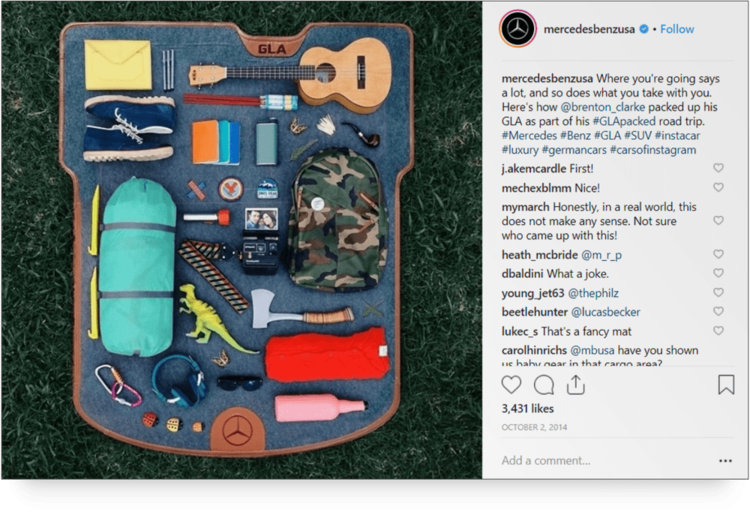
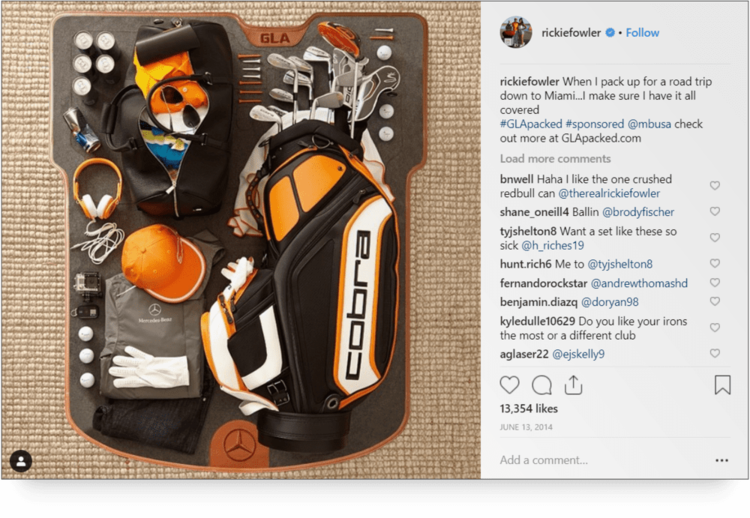
These expertly arranged shots worked perfectly with the Instagram aesthetic, and really helped Mercedes to target a younger market. Each influencer posted the image on their own account first, before it was reposted on the official Mercedes Benz page. But, the really creative posts came after this, as the influencers attempted to attract the most engagement by crafting individual and striking images of their road trip.
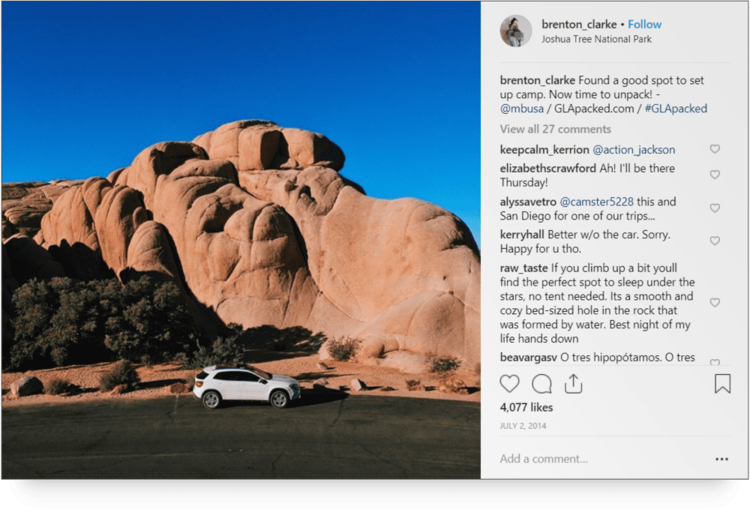
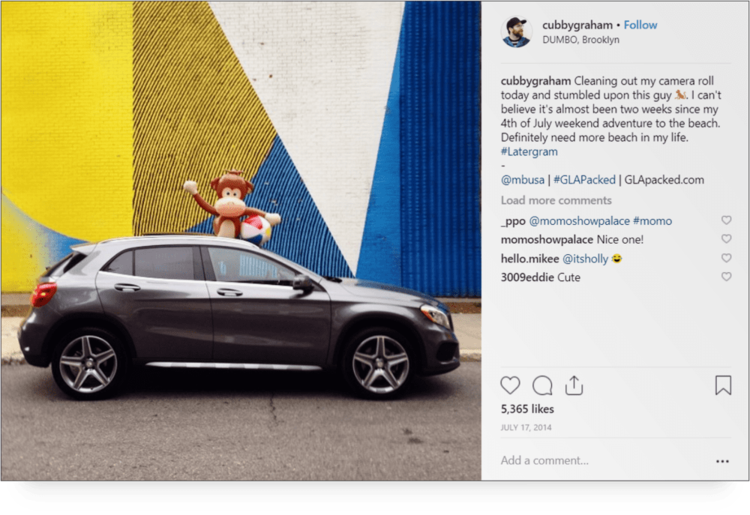
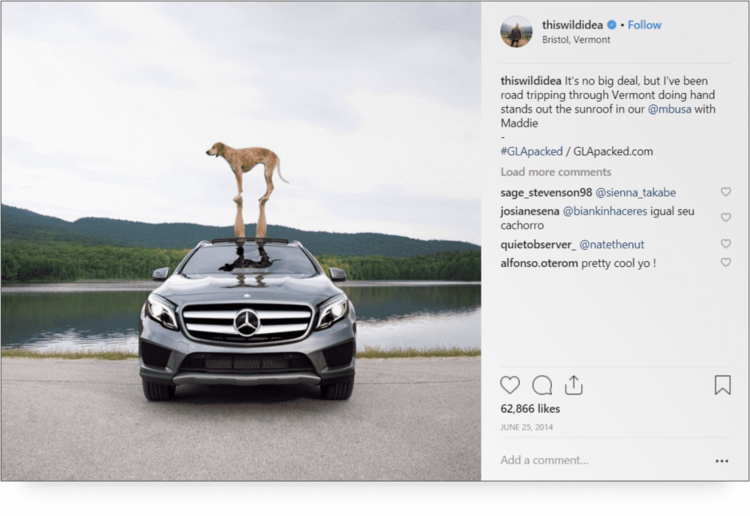
WHY IT WORKED
Now that millennials are taking an interest in the luxury market, brands are having to seriously rethink their marketing strategies if they want to reach the right people. By not only using Instagram to market themselves, but turning it into an adventure in top-quality UGC, they were able to tap into this generation’s love of the platform and quality content.
When they first rolled out this method for the launch of their CLA model, they experienced some great success. Thanks to their Instagram infiltration, the CLA soon became the darling of the younger generations, with CLA owners becoming the youngest generation of Mercedes owners in the history of the brand.
This time around, they had access to Instagram ads as well – something that wasn’t available to them with their CLA campaign. So, not only were they reaching Millennials with Instagram posts and influencer team-ups, they could pour some of their marketing budget into placing those posts more strategically than ever before.
HOW YOU CAN FOLLOW SUIT
Luxury brands aren’t always the first to think of Millennials as their target market, but once you do, you’ll need to change your tactics to reflect this. Direct mail print ads are not the way to reach this digitally connected group. If they find these leaflets in their mailboxes, they’re likely to move them straight to the recycling without so much as a second glance, sighing at the unnecessary use of paper that the whole process entailed.
But, it’s not just about being online anymore. You need to find a way to cut through the noise. Working with your potential customers to create content allows you to connect with them on a much more personal level. UGC helps to give your brand a more trustworthy image online that people find it easier to connect to.
Millennials + Luxury = Winning
Millennials may be killing plenty of things out there according to journalists, but they are working hard to keep the luxury market well and truly alive. As a brand in this niche, ignoring this corner of the market is a huge mistake. By taking advantage of online tools, social media, and user-focused marketing, brands can expand their target market to include this demographic.
Millennials value real people and experiences over the products themselves, so investing in UGC and influencer marketing help to ingratiate yourself to this hard to win market. Luxury brands should look to the campaign examples above and use them as a guiding post to build their own marketing genius.



